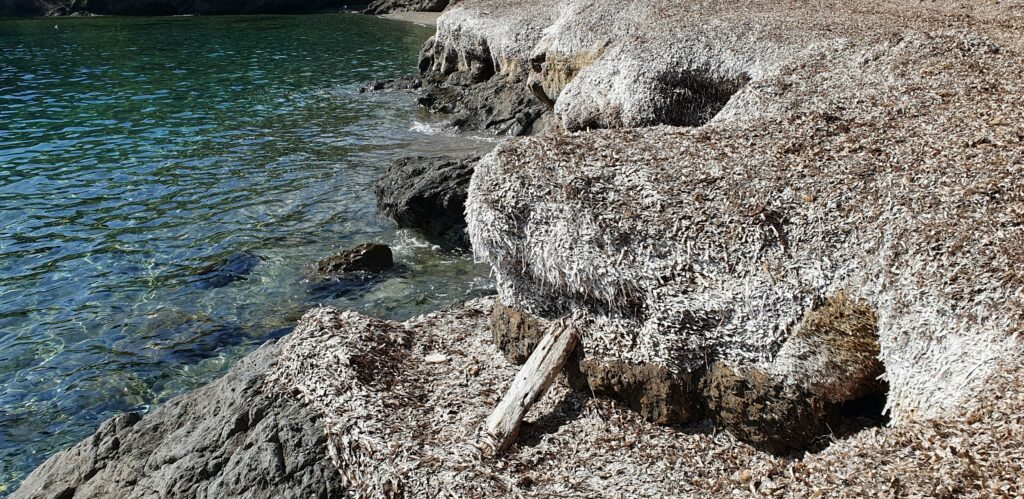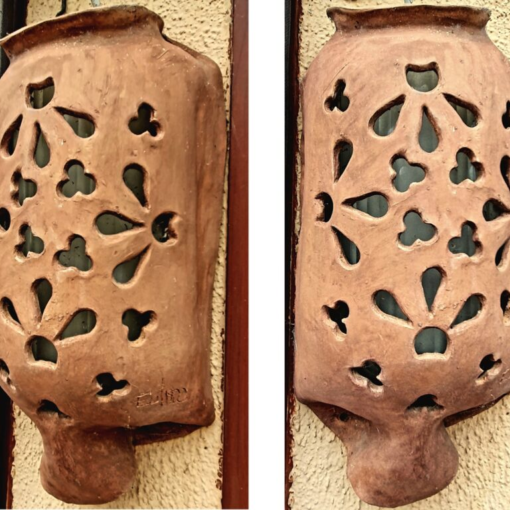
In a small town on the Gargano coast, when you don’t want to give something to a capricious child, you will say that he will get it “when the sea stops”. The incessant movements of the sea are the center of curiosity and observation of all human beings who have gazed towards the horizon from its shores.
The knowledge of the movements of the sea has always been a vital necessity, not only for the inhabitants of the coasts, but for anyone wishing to look for other landing places; the study of marine dynamics has always interested scholars from all over the world and from all eras.
The dynamics of the sea can be ascribed to three types of movement, which can include the whole planet or only the stretch of sea in front of us: the waves are local; currents can affect several continents; tides occur all over the Planet at the same time. Each of these phenomena can be more or less evident depending on the latitude, exposure and all the other factors that characterize each coast.
Dedicheremo differenti articoli a questi tre fenomeni che animano le acque marine, cercando di guardarli con attenzione per capire non solo il gioco degli elementi fisici che li causano, ma le conseguenze che determinano sulle popolazioni dei viventi.
We will dedicate different articles to these three phenomena that animate marine waters, trying to look at them carefully to understand not only the play of the physical elements that cause them, but the consequences they have on living populations.
The first “rhythm” we will examine is the one most immediately known and evident: the waves.
The waves, which incessantly roll over on the beaches or against the rocks, are generated by the action of the wind on the surface of the water: the friction between air and water causes a traction which “stretches” the surface like an elastic membrane. This distortion caused by the wind and the reaction to it by the surface tension initially cause undulations which, as the phenomenon persists, transform into waves. Each wave is characterized by a lower part, called the belly, and a higher part, the crest.

The horizontal distance between two successive crests is the wavelength (L), while the height of the wave (H) is the height between the belly and the crest. The time required for two successive crests to pass through a predetermined point is the period (T). The steepness of the wave (H/L) is proportional to the height and inversely proportional to the length: the higher and more frequent the waves are, the steeper they are.
The speed of the wave, or celerity, is C = L/T. The height and period of a wave depend on the strength of the wind that generated it, the time and the distance from which the wind blows (fetch). The higher the fetch, the higher L and T.
Under the effect of the wave, the water particles move according to a circular path; one complete cycle corresponds to one wavelength. At depth the particles no longer follow a circular path, but move back and forth horizontally. The most important consequence of this is that the wave proceeds without the water moving: just as it happens when a wave-like movement is imparted to a rope fixed at one end or simply to a whip.

The wave motion is therefore a superficial phenomenon and calm reigns just a few meters below the most tremendous waves. It is the reason why all the marine mammals and fish that have the opportunity to do so, sink, waiting for the storm to pass.
When, approaching the shore, the depth of the bottom decreases, the ventral part of the wave, which first reaches the bottom, undergoes a slowdown due to the friction with the bottom and the wave assumes an arcuate shape which causes it to overturn. In the event that the wave meets a rock overlooking the sea, its force is discharged directly onto it. In the long run, this causes the lower part of the rocks to erode and, consequently, the upper parts collapse, thus causing the coast to retreat.
On sandy coasts, during storm surges the waves push the sediments transported by rivers and distributed along the coasts by local currents towards the shores, thus causing the coast to advance.

The transfer of energy from marine winds to coastal areas by means of waves is the system with which the sea manages, over time, to shape the coastline.
Others factors of organic origin can also be added to the physical ones. We would like, in particular, to recall the very important role performed by the banquettes. The banquettes are structured and permanent accumulations of beached Posidonia (Posidonia oceanica) leaves, which play a fundamental role in protecting both rocky and sandy coasts from erosion.
Furthermore, considering how they represent a fragile and complex and peculiar ecosystem, it becomes evident how “cleaning” the beaches and cliffs from the leaves of Posidonia to favour an ignorant tourism, actually prevents the formation of banquette and is by no means a good idea.

Credits
Author: Anna Lacci is a scientific popularizer and expert in environmental education and sustainability and in territory teaching. She is the author of documentaries and naturalistic books, notebooks and interdisciplinary teaching aids, and multimedia information materials.
Translation by Maria Antonietta Sessa



